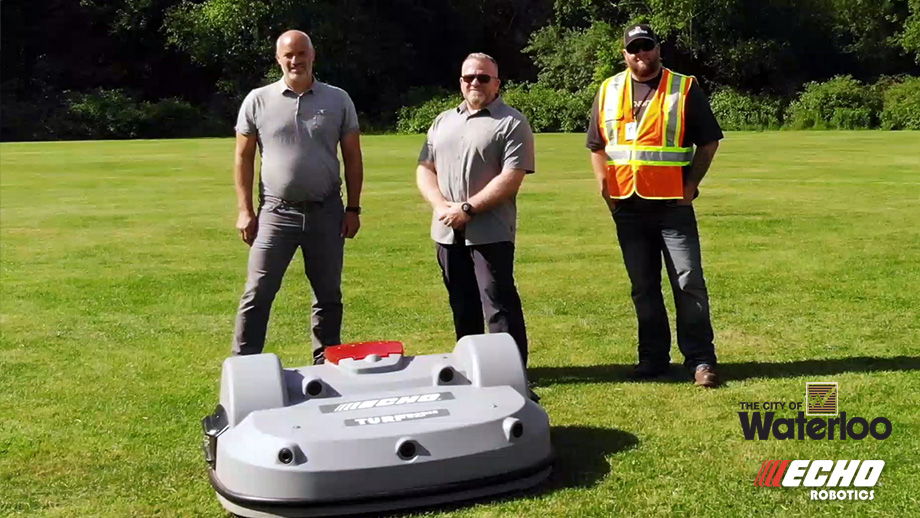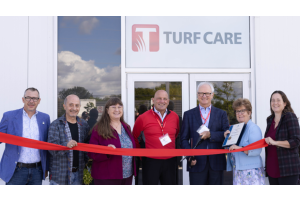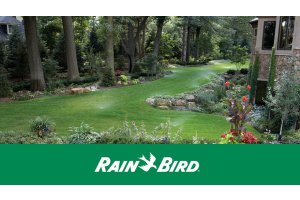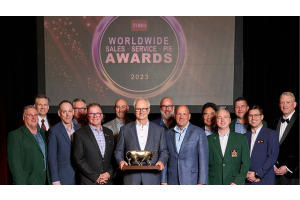The City of Waterloo becomes the first municipality in Canada to add an electric robot mower to its fleet
Like many municipalities across the country, The City of Waterloo, Ontario is committed to moving towards more green initiatives and becoming a more environmentally responsible city. The recent addition of an autonomous, emissions-free, robotic turf mower to their fleet is the latest example of how the city is finding creative ways to do its part to reduce greenhouse gas emissions (GHGs).
After the completion of a successful 20-day trial period with the Echo Robotics TM-2000 turf mower, the City of Waterloo became the first municipality in Canada to purchase a robotic mower, currently in use at the Laurel Creek Conservation Area cricket pitch. “With this unit we were attracted to how we would be able to reduce our emissions, but also how we could allocate staff time elsewhere and be more efficient, freeing us up to use our staff in other areas,” said Tim Wolfe, Manager of Parks Operations, Forestry and Horticulture at the City of Waterloo.
At 1 ¾”, the desired height of cut for the 5.3-hectare cricket pitch is lower than other areas being maintained across the city. With a traditional mower, two staff members were travelling to the site with a truck, trailer, and wide-area mower three times per week to maintain this height. “Without a dedicated piece of equipment, this meant three full days, including time to raise and lower the mower, clean the equipment, plus travel time to and from the site,” explained Terry Henderson, Supervisor of Turf, Sports Fields & IPM at the City of Waterloo. “Now, no-one needs to go out to the pitch except me, to quickly check on things.”
The self-charging mower can be operated 24/7, day or night, rain, or shine. With a cutting width of over 40 inches, the TM-2000 can cut up to six acres of grass and boasts eight times lower energy costs when compared to traditional mowers. Quiet operation also means that the mower is appropriate for use in noise-sensitive areas without any disturbance. In addition to the reduced environmental impact, energy, and labour savings, the robotic mower also promotes greatly improved turf health with reduced compaction and a first-cut appearance all the time.
Henderson explained that there has been some experimentation with, and refinement to the mowing schedule since commencing the trial. “In the beginning, we were running the robot close to 24 hours/day. Then we dialed it back to 8 hours, running from midnight to 8am. We now run on a more compressed schedule for 5 hours/day on weekday mornings. We’ve gotten to the point where the field is in perfect condition – it looks amazing. We don’t need to run it during the night anymore unless the turf is in a growth spurt. The entire pitch is consistently cut with no areas missed, even with the different varieties of grass.”
With the robotic mower, in contrast to their previous mowing schedule, instead of having to wait 2 days to cut more growth, the city is able to maintain superior turf conditions 24/7, with the mower cutting a minute amount of grass five times/week. “For the plant health, it’s the best thing. You’re cutting less than a ¼ of the blade. It’s the best-case scenario for the turf,” said Henderson. Thanks to the user-friendly mobile and desktop app, the turf operations staff can easily monitor the field conditions and remotely manage the mowing schedule and blade height as well as monitoring for alerts. The mower is also equipped with advanced automation, guidance, and safety features including five sonar sensors to ensure optimal obstacle detection, an emergency stop button, and GPS location and theft protection.
Henderson also explained that the difference in time spent on routine maintenance on this unit vs. a traditional mower is “like night and day”. “Once the grass gets to an optimal height, there is less clumping because you’re only cutting a small amount of grass each day. Now we have a team member who blows the mower out once/week, and every 3-4 weeks we spend 15 minutes switching out the blades. Compared to washing a regular mower daily, sharpening blades weekly, and changing them monthly, the difference is considerable.”
Jason Evans, Manager of Fleet Services with the City of Waterloo explained that part of his role as the Fleet Manager is to look for new technologies and new ways of doing business that allow the teams to be more effective and efficient in their day-to-day tasks. Evans has this advice for other municipalities interested in robotic mowing opportunities, “Fleet managers need to work closely with their parks departments to identify areas where these units can be successful and bring in a unit for a trial. This is usually the best way to introduce something new like this into a municipality.” Evans said that the City of Waterloo is looking at other locations because this site trial has been such a success and noted that “The cricket teams are very impressed with how the turf looks and the level of service being provided.”
The team will be conducting a full cost analysis at the end of the season but said that the Echo TM-2000 is proving to be a cost-effective, efficient, and low-maintenance addition to their turf equipment fleet. “The buy-in, excitement, and interest in this as a green initiative has been amazing,” said Wolfe.
“We’re going to keep looking for opportunities to improve and bring in new technology that will help us lower our carbon footprint and make us better for the future. I think the robotic mower is a good addition that supports that goal,” said Evans.
Get in touch with Paul Cooper, Turf Care Territory Manager, Municipal & Non-Golf to schedule a demo or learn more about adding an Echo robotic mower to your fleet. | 905-715-6797
Learn more at: echorobotics.com










